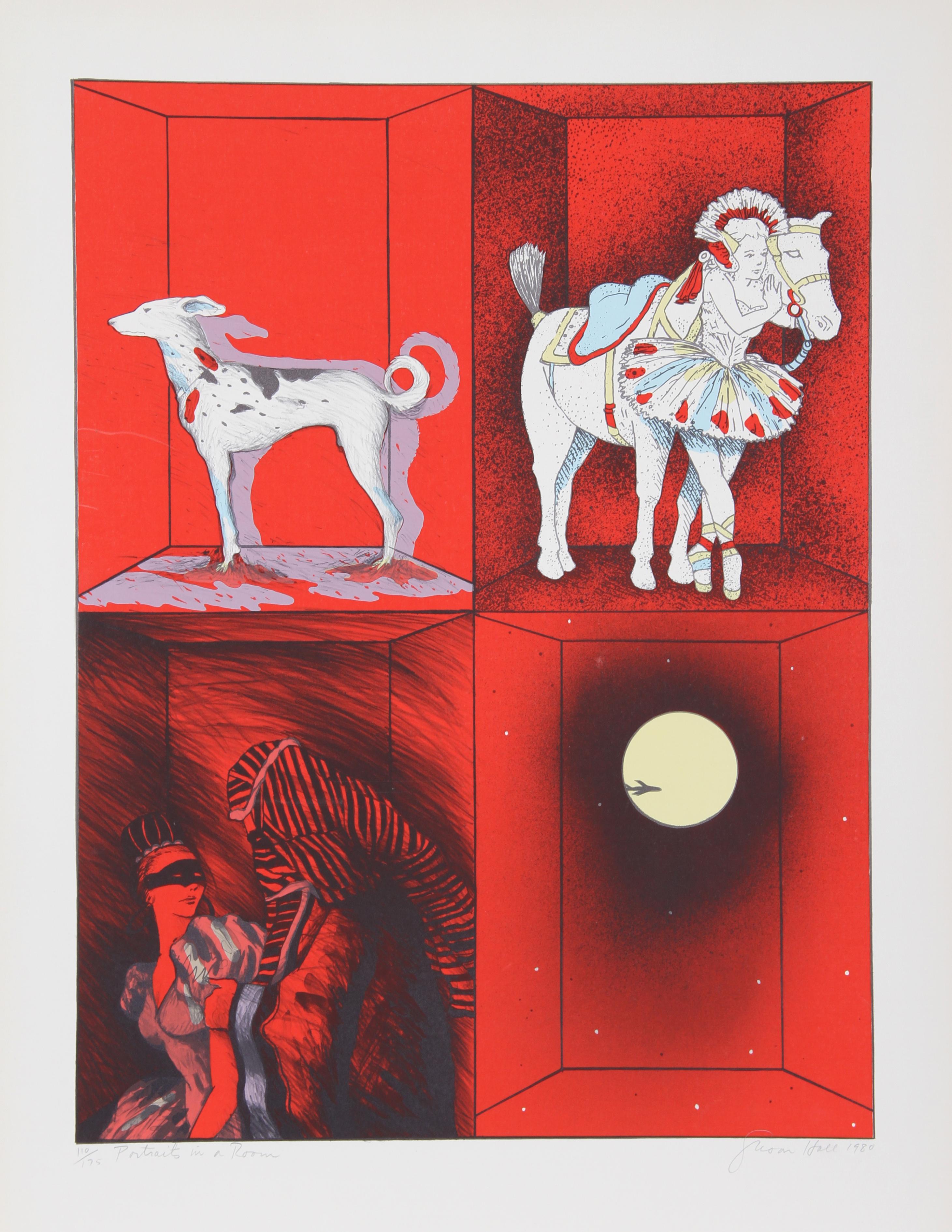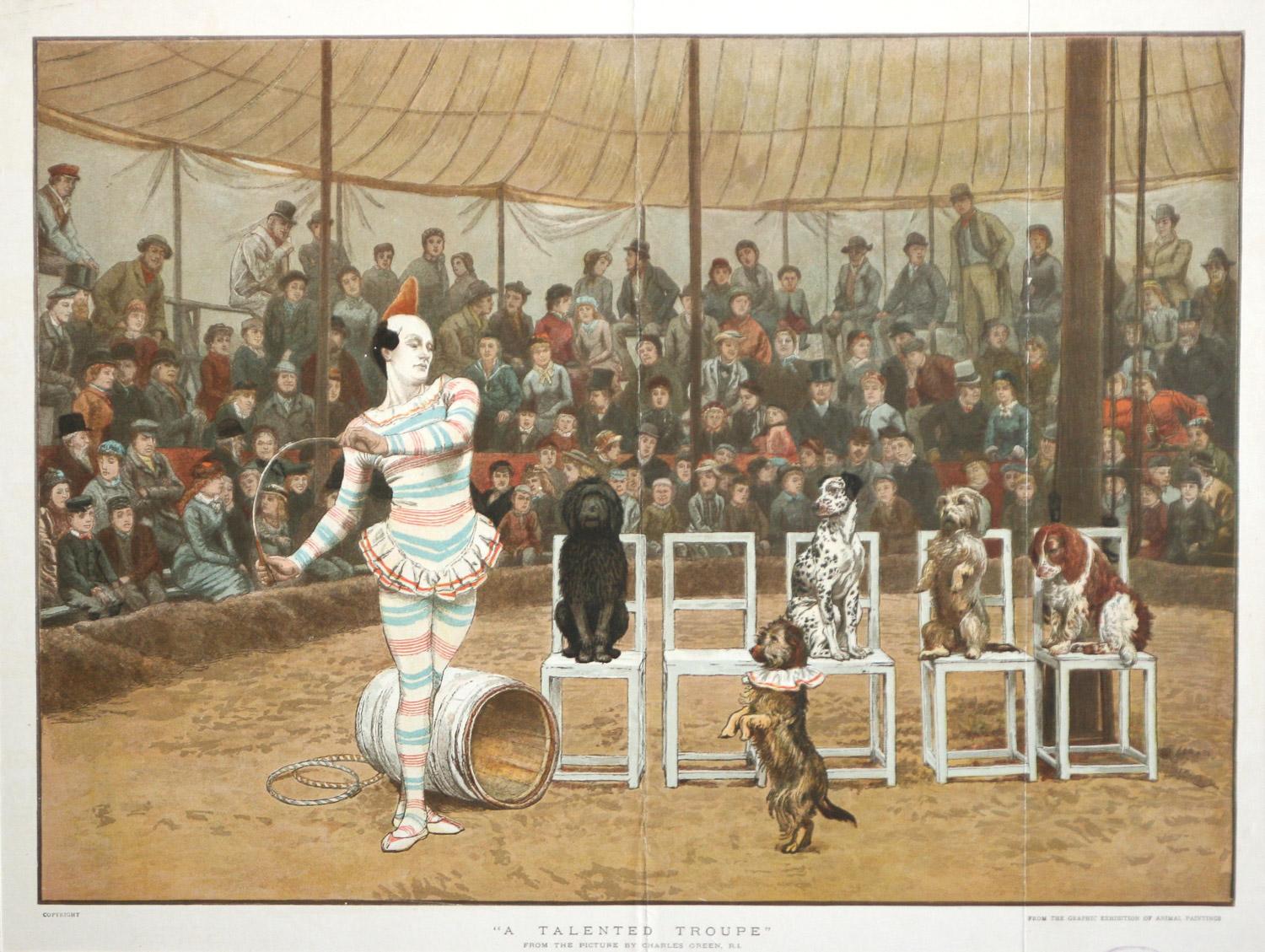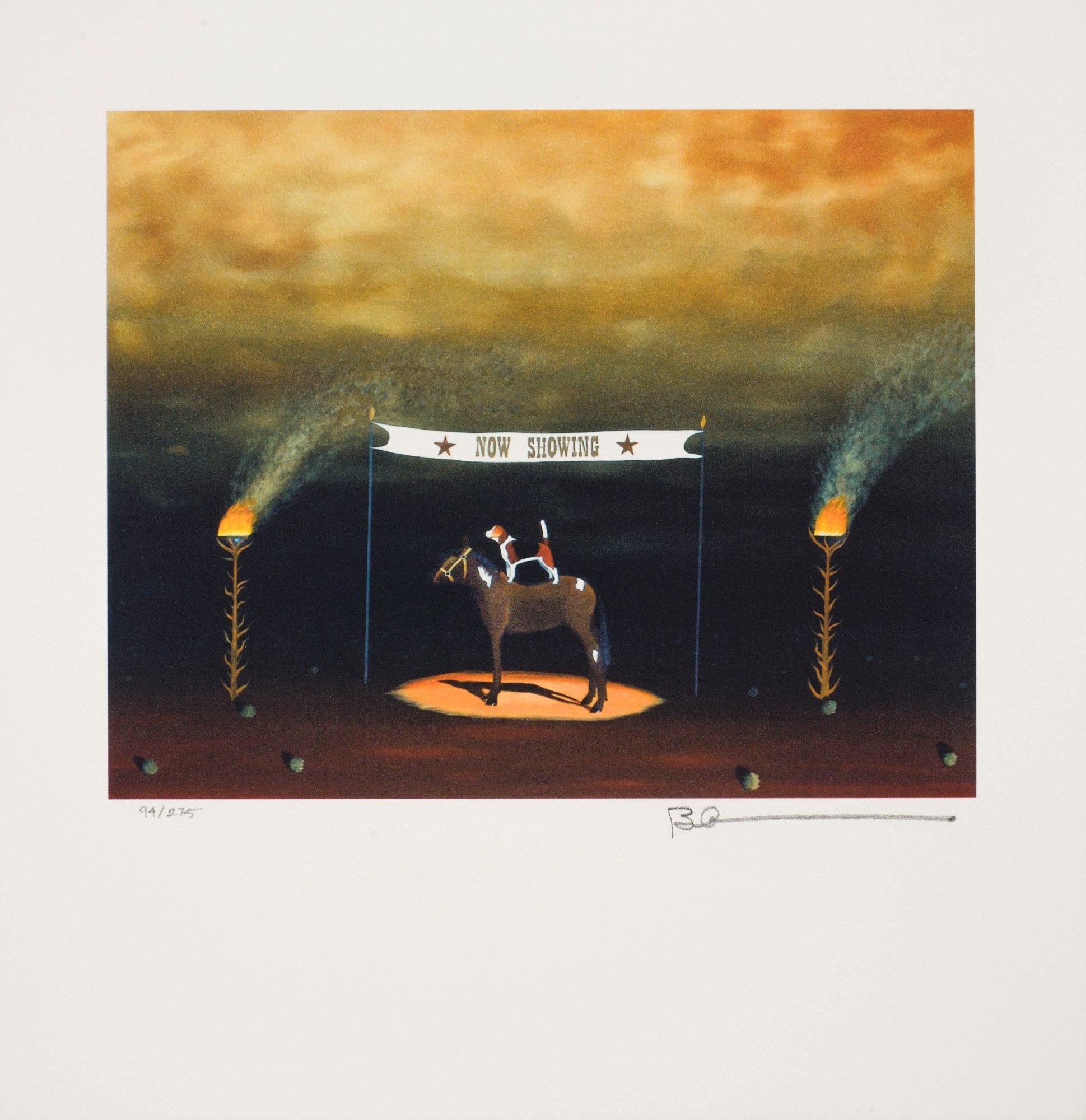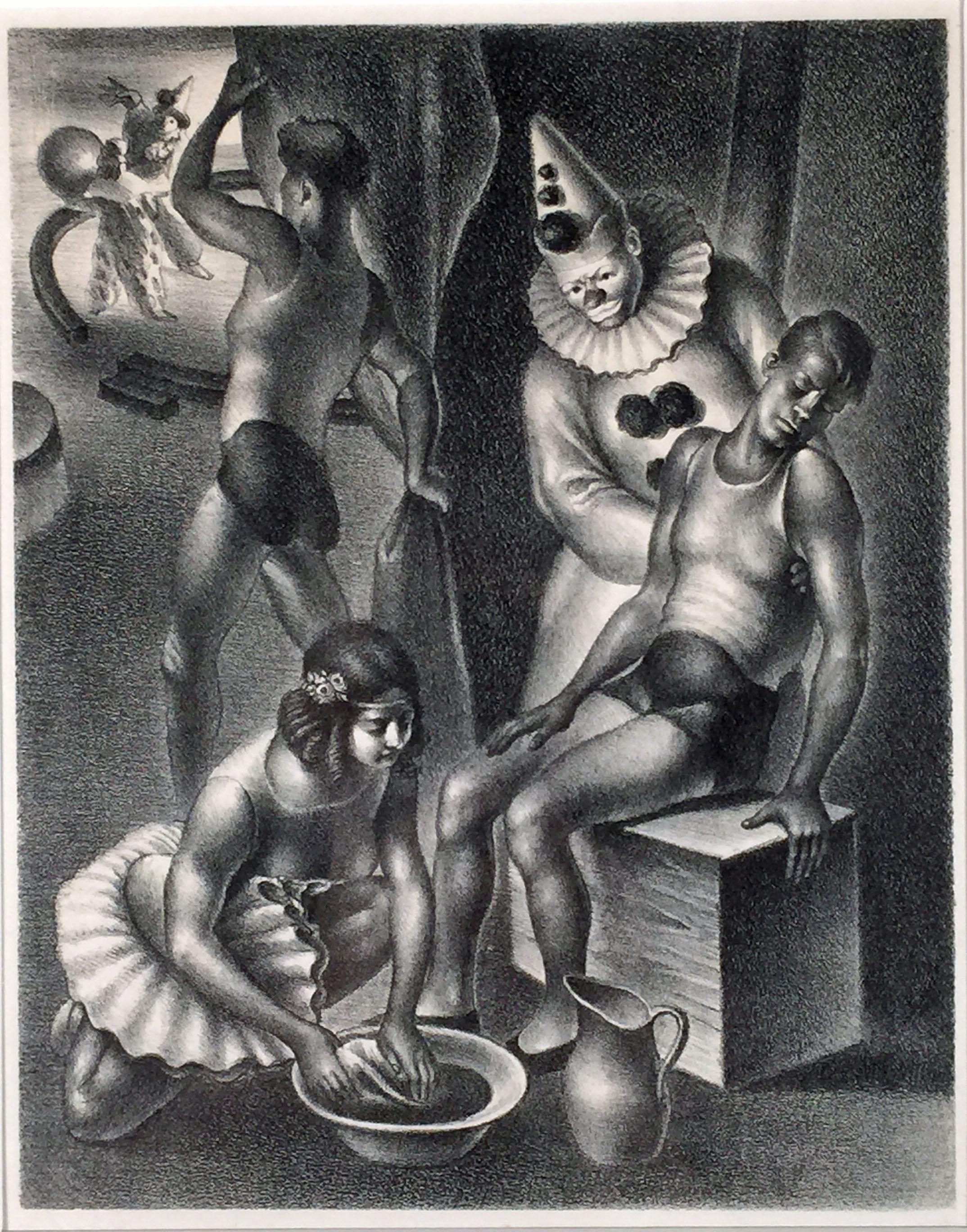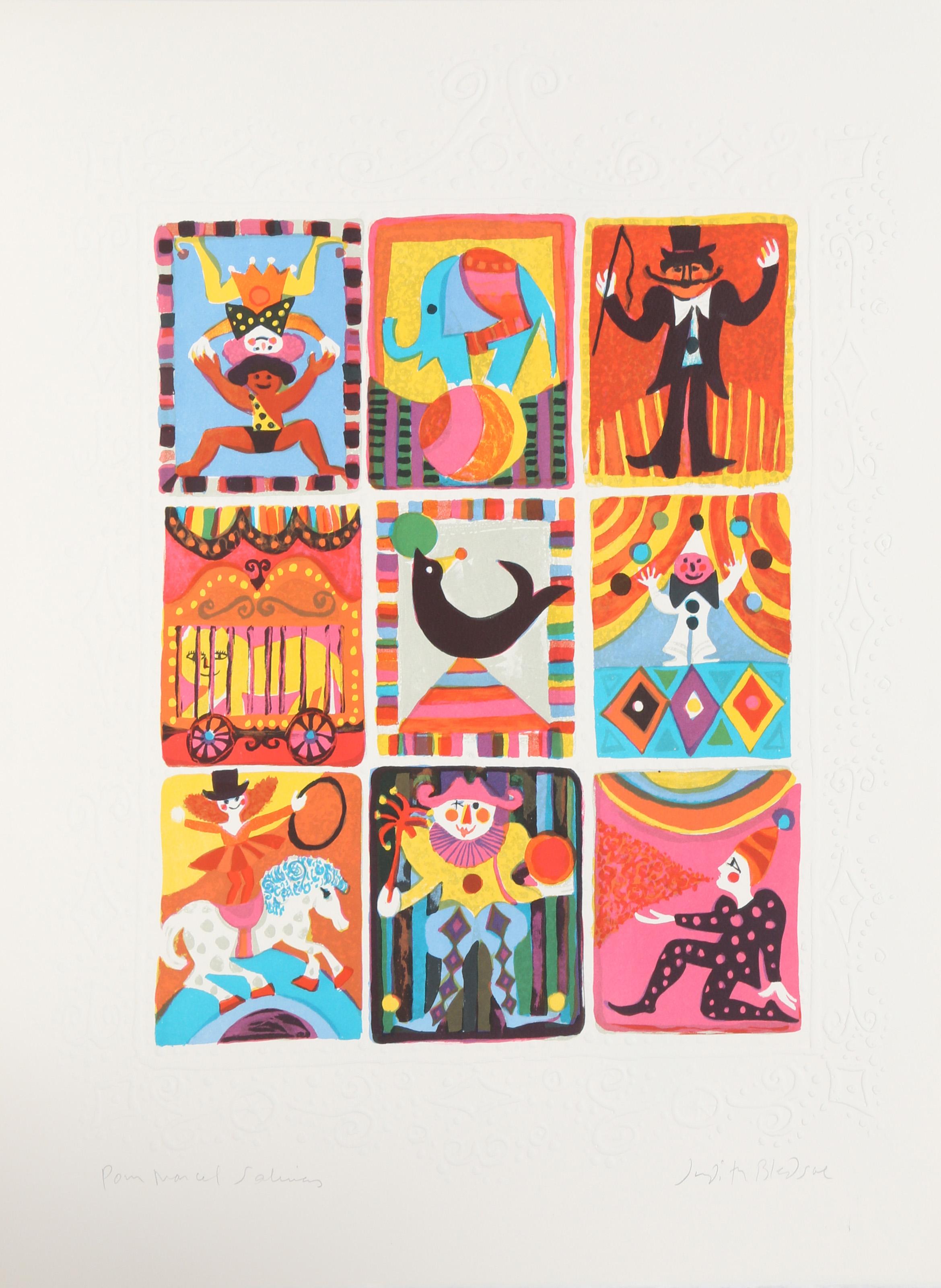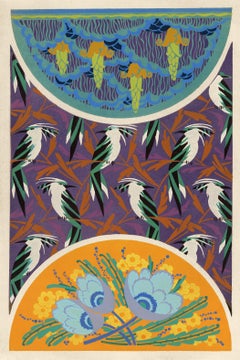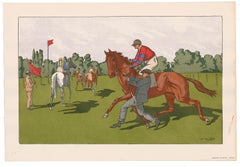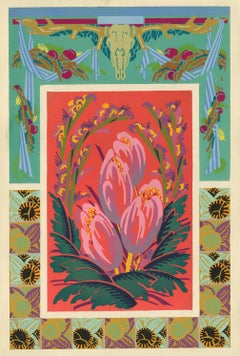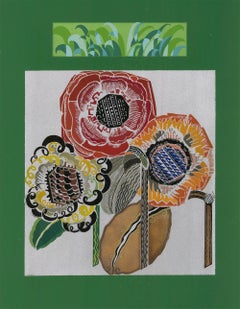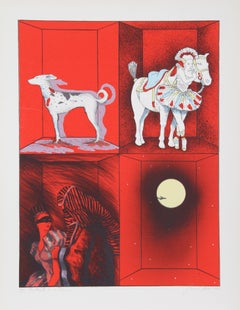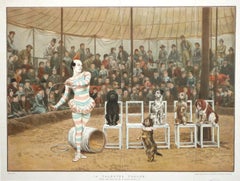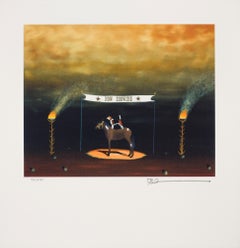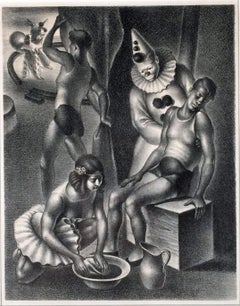Items Similar to Dog Circus Print
Want more images or videos?
Request additional images or videos from the seller
1 of 9
Andrée RuellanDog Circus Print1936
1936
$1,200
£902.08
€1,045.80
CA$1,675.39
A$1,876.52
CHF 976.42
MX$22,790.23
NOK 12,378.48
SEK 11,680.02
DKK 7,803.16
Shipping
Retrieving quote...The 1stDibs Promise:
Authenticity Guarantee,
Money-Back Guarantee,
24-Hour Cancellation
About the Item
Color stencil print titled "Dog Circus" by Andrée Ruellan (1905-2006). New York, American Artists Group, Inc., circa 1936. Unsigned. Presented in an archival mat.
- Creator:
- Creation Year:1936
- Dimensions:Height: 13 in (33.02 cm)Width: 16.5 in (41.91 cm)
- Medium:
- Period:
- Condition:
- Gallery Location:New York, NY
- Reference Number:Seller: 1531261stDibs: LU43835645382
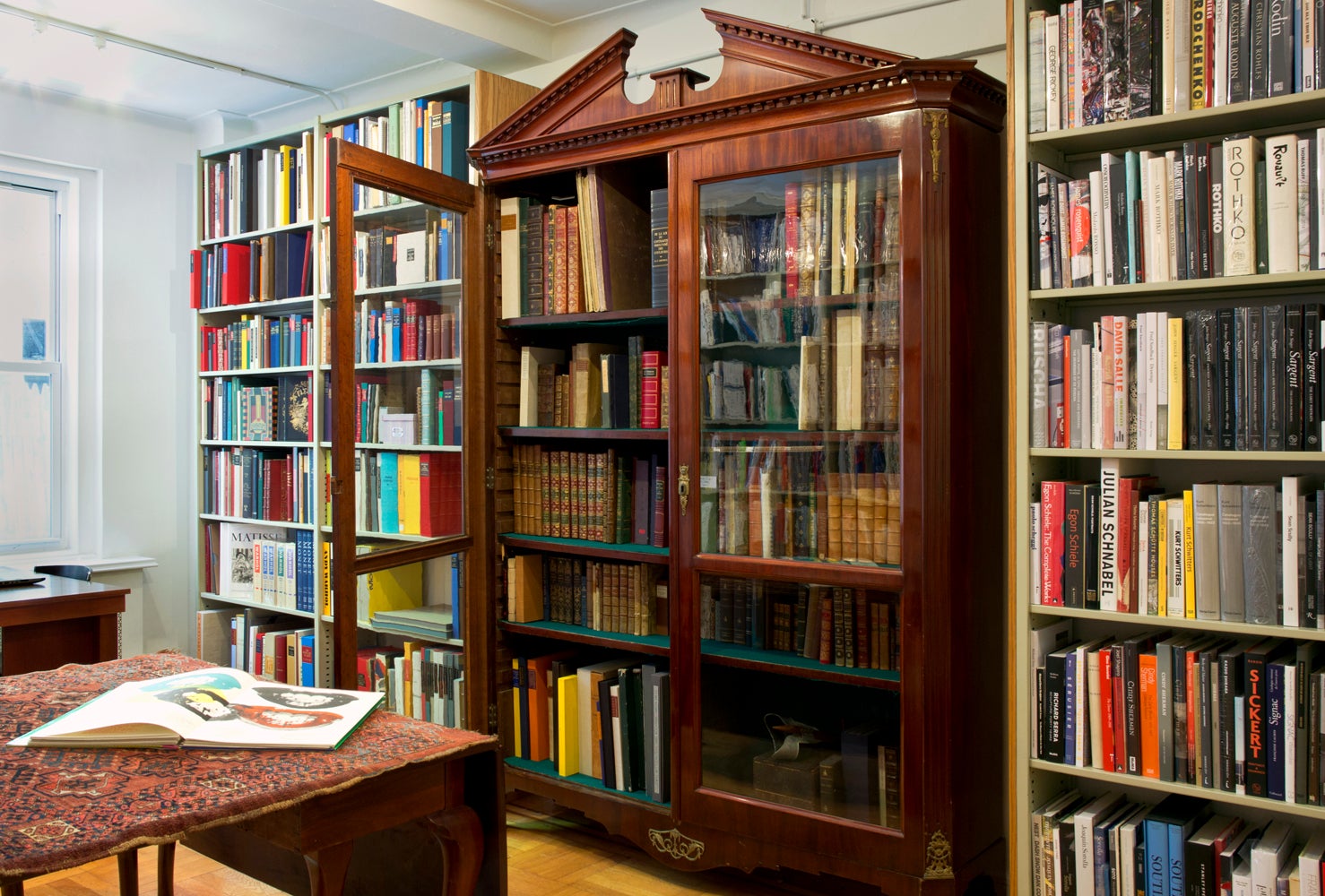
About the Seller
4.9
Recognized Seller
These prestigious sellers are industry leaders and represent the highest echelon for item quality and design.
Established in 1972
1stDibs seller since 2016
185 sales on 1stDibs
Typical response time: <1 hour
Associations
International Fine Print Dealers Association
- ShippingRetrieving quote...Shipping from: New York, NY
- Return Policy
Authenticity Guarantee
In the unlikely event there’s an issue with an item’s authenticity, contact us within 1 year for a full refund. DetailsMoney-Back Guarantee
If your item is not as described, is damaged in transit, or does not arrive, contact us within 7 days for a full refund. Details24-Hour Cancellation
You have a 24-hour grace period in which to reconsider your purchase, with no questions asked.Vetted Professional Sellers
Our world-class sellers must adhere to strict standards for service and quality, maintaining the integrity of our listings.Price-Match Guarantee
If you find that a seller listed the same item for a lower price elsewhere, we’ll match it.Trusted Global Delivery
Our best-in-class carrier network provides specialized shipping options worldwide, including custom delivery.More From This Seller
View AllPlate 7 from "Formes et Couleurs"
Located in New York, NY
Plate 7 from "Formes et couleurs; vingt planches en couleurs contenant soixante-sept motifs décoratifs" by Auguste H. Thomas. Paris: A. Levy, Librarie Centrale des Beaux-Arts, circa ...
Category
1930s Animal Prints
Materials
Paper
Equestrian Scene No. 5.
By Charles Ancelin
Located in New York, NY
Original pochoir process print. Paris, Galerie Lutetia, circa 1920.
Category
1920s Animal Prints
Materials
Paper
Plate 20 from "Formes et Couleurs"
Located in New York, NY
Plate 20 from "Formes et couleurs; vingt planches en couleurs contenant soixante-sept motifs décoratifs" by Auguste H. Thomas. Paris: A. Levy, Librarie Centrale des Beaux-Arts, circa...
Category
1930s Animal Prints
Materials
Paper
Poppy Pochoir from Relais
By Edouard Benedictus
Located in New York, NY
Benedictus, Edouard.
"Relais."
Plate 14.
Paris, Éditions Vincent, Fréal et Cie, 1930.
Original pochoir, printed by J. Saudé.
Unsigned and unnumbered from an edition of presumabl...
Category
1930s Art Deco Animal Prints
Materials
Paper
Equestrian Scene No. 10: Horse Jumping
By Charles Ancelin
Located in New York, NY
Equestrian Scene No. 10 by Charles Ancelin. Original hand-painted pochoir process print. Paris: Galerie Lutetia, circa 1920.
Category
1920s Animal Prints
Materials
Paper
Toujours Chic Tryptic.
Located in New York, NY
Set of 3 covers to the French fashion journal, "Toujours Chic" illustrated by Germaine Joumard who also sometimes signed her pieces "ZouZou." The three issues are: Les Robes de Soirees...
Category
1920s Figurative Prints
Materials
Paper
You May Also Like
Portraits in a Room
By Susan Hall
Located in Long Island City, NY
Portraits in a Room
Susan Hall, American (1943)
Date: 1980
Lithograph, signed and numbered in pencil
Edition of 175
Image Size: 24 x 18 inches
Size: 30 in. x 22 in. (76.2 cm x 55.88 cm)
Category
1980s Animal Prints
Materials
Lithograph
A Talented Troupe by Charles Green
Located in Paonia, CO
This spectacular chromolithograph by the English illustrator and painter Charles Green (1842-1909) shows the clown and his performing troupe of talented dogs in a circus tent with a...
Category
19th Century Other Art Style Figurative Prints
Materials
Lithograph
The Dog and Pony Show
By Robert Deyber
Located in Greenwich, CT
The Dog and Pony Show is a lithograph on paper, 7.5 x 9 inches image size, and initialed 'BD' lower right. From the edition of 395, numbered 94/275 (there were also 100 Roman and 20 ...
Category
21st Century and Contemporary Contemporary Prints and Multiples
Materials
Paper, Lithograph
CIRCUS PERFORMERS
By Simka Simkhovitch
Located in Portland, ME
Simkhovich, Simka. CIRCUS PERFORMERS. Lithograph, C. 1933. Edition size not known. Unsigned. 11 x 8 1/4 inches, 278 x 209 mm. Framed to 16 x 12 inches...
Category
1930s Figurative Prints
Materials
Lithograph
Nine Circus Scenes, Lithograph by Judith Bledsoe
By Judith Bledsoe
Located in Long Island City, NY
Judith Bledsoe, American (1938 - 2013) - Nine Circus Scenes. Year: circa 1980, Medium: Lithograph with Embossing, signed and dedicated in pencil, Image Size: 16.5 x 13 inches, Size:...
Category
1980s Folk Art Prints and Multiples
Materials
Lithograph
Circus - 25 illustrated books - Vintage poster - 1982
By Marc Chagall
Located in Paris, IDF
After Marc CHAGALL
Circus
Offset vintage poster, 1982
On heavy paper 66 x 46 cm / 26 x 18"
INFORMATION : Vintage poster for the exhibition "25 livres illustres" at Patrick Cramer Ga...
Category
1980s Surrealist Figurative Prints
Materials
Offset
More Ways To Browse
Vintage Dog
Thomas Hart Benton Exhibition Poster
William Dole
Alexander Pope Jr
Andy Warhol Endangered Species
Angelique De Paris
Auguste H Thomas
Combat Pour La Paix
George Rodrigue Tie
Onyx Compote
Picasso Le Taureau
Robert Greenhalf
Simon Bussy
Andy Warhol Pussy
Audubon Flamingo
Audubon Hawk
Blue Bear By George Rodrigue
Colombe De La Paix
